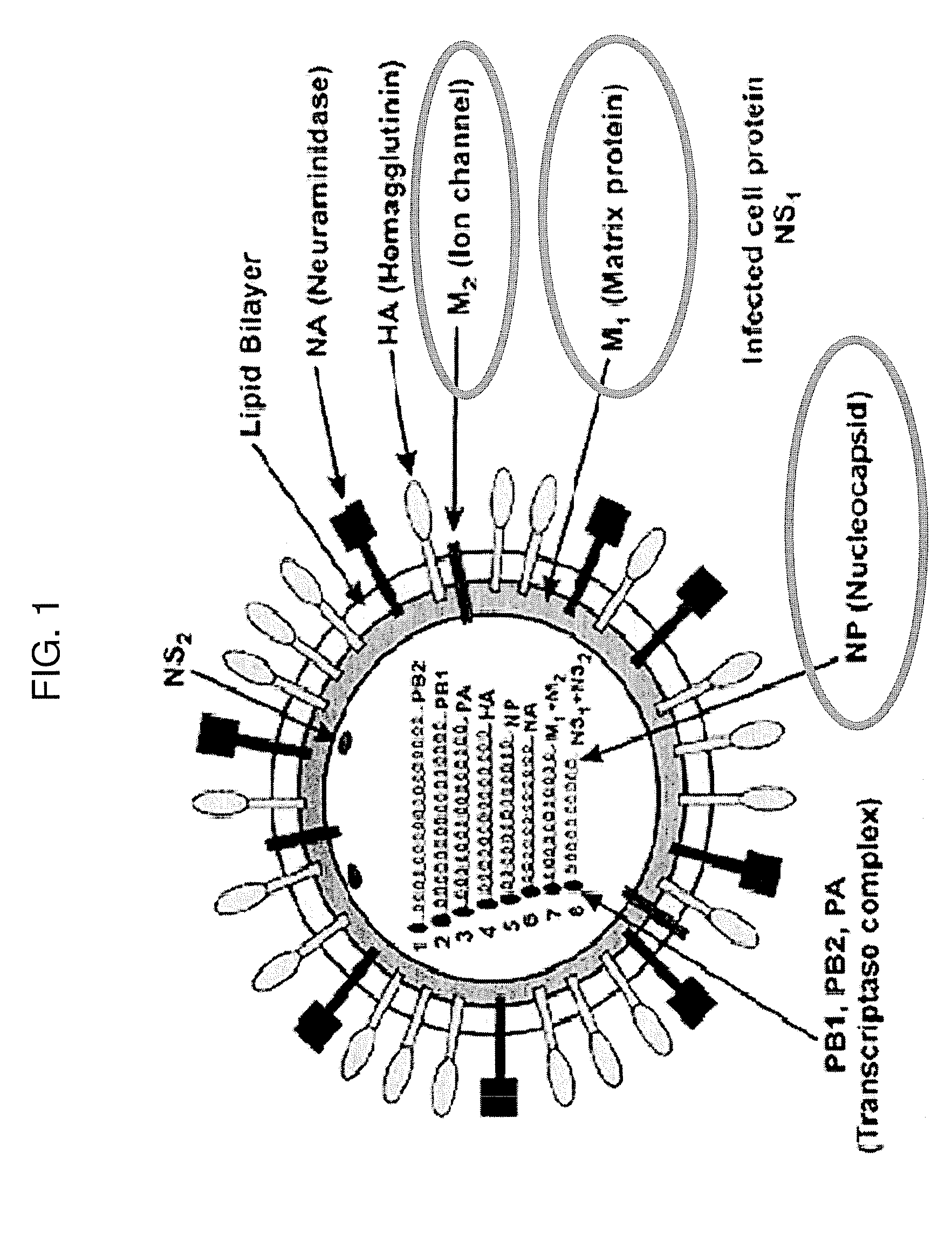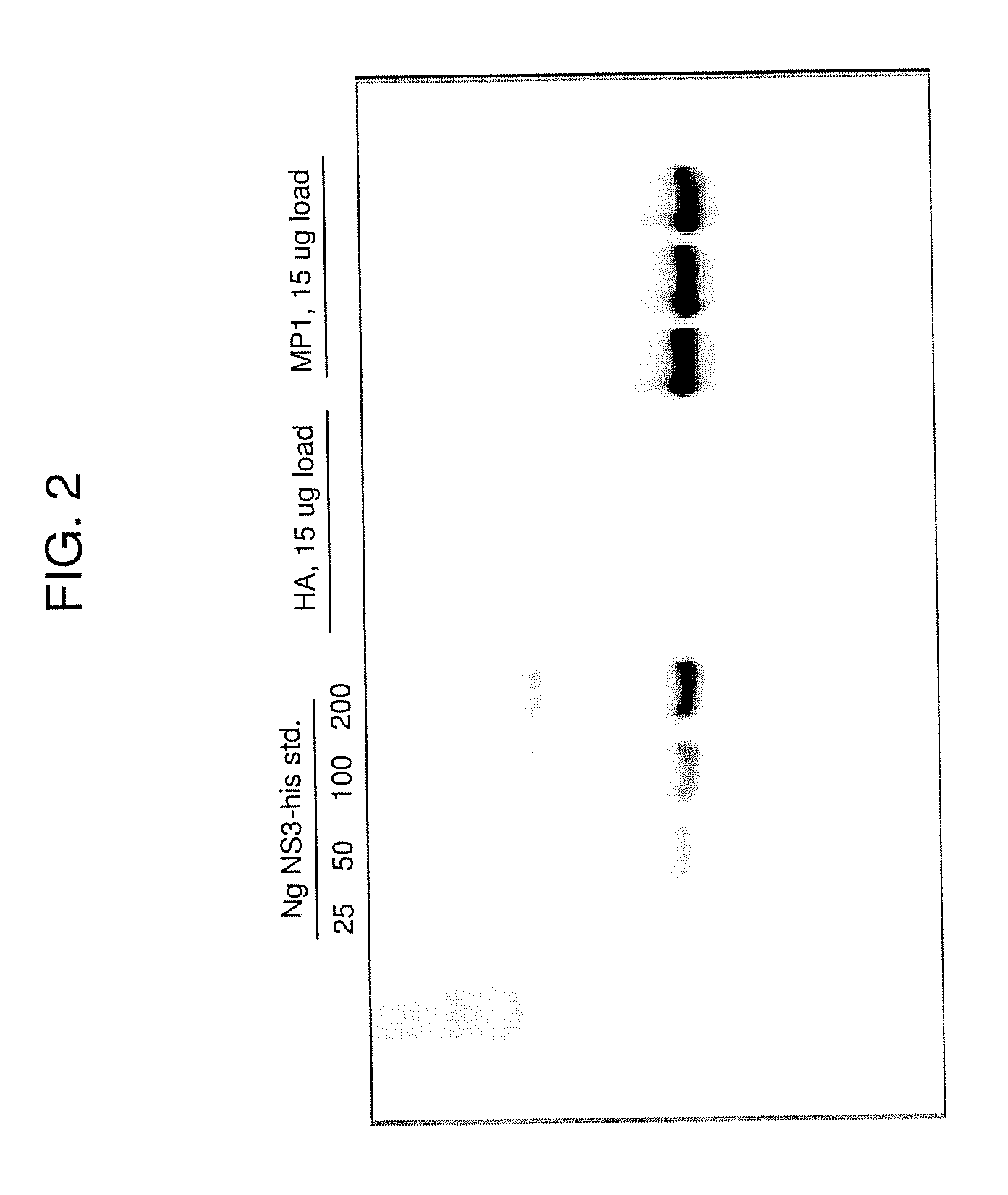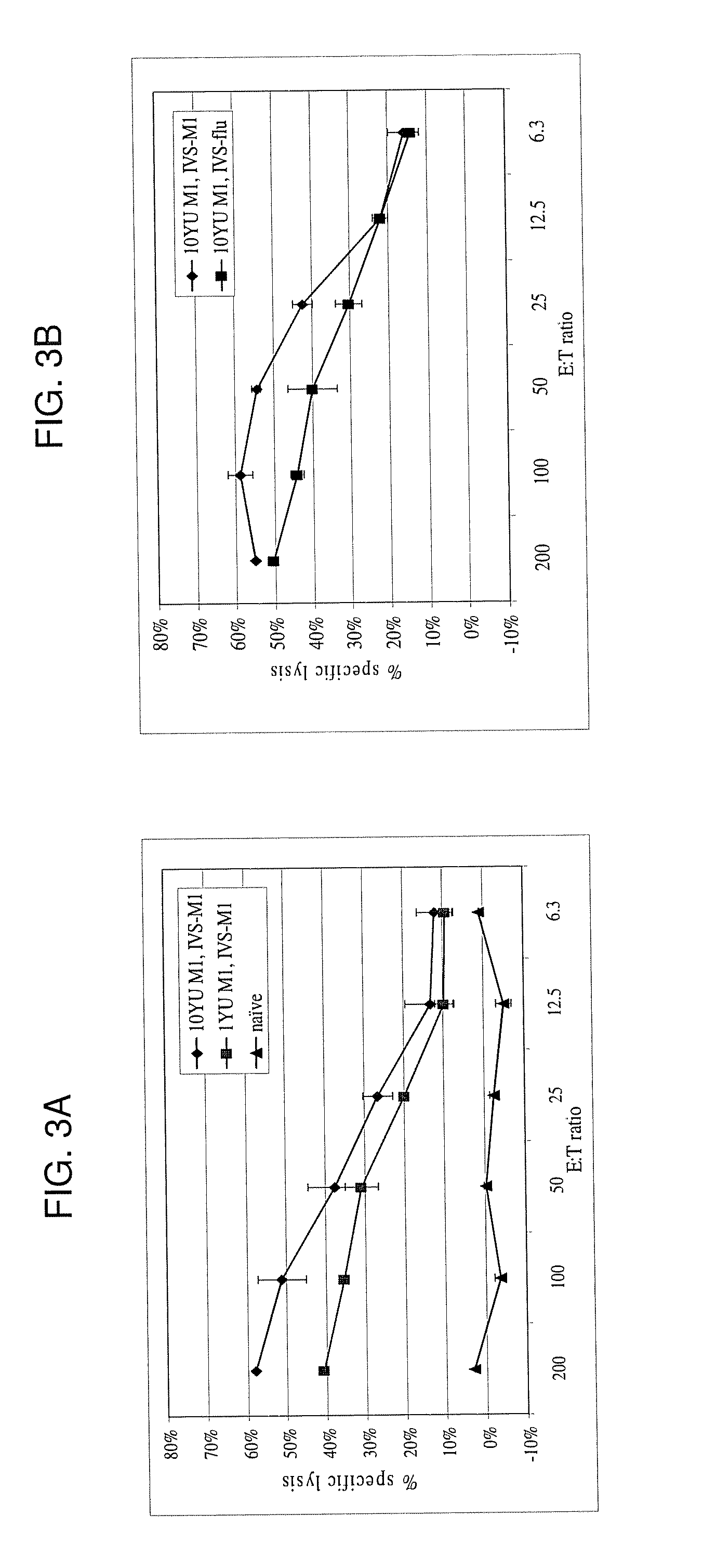Yeast-based vaccine for inducing an immune response
a technology of immune response and yeast, which is applied in the field of yeast-based vaccines, can solve the problems of insufficient immunity following infection by one strain, the most dangerous influenza virus for the young and the old, and the most dangerous for the young and the old, and achieve the effect of boosting antigen-specific immune responses
- Summary
- Abstract
- Description
- Claims
- Application Information
AI Technical Summary
Benefits of technology
Problems solved by technology
Method used
Image
Examples
example 1
[0254]The following example describes the engineering of GI-8001 (also generally referred to in some of the figures as GI-8000), an influenza M1 fusion protein yeast vaccine of the present invention.
[0255]Saccharomyces cerevisiae was engineered to express an influenza M1 fusion protein under the control of the copper-inducible promoter, CUP1. The fusion protein is a single polypeptide with the following sequence elements fused in frame from N- to C-terminus (the amino acid sequence of the fusion protein being represented herein by SEQ ID NO:4): 1) the sequence MADEAP (SEQ ID NO:1) to impart resistance to proteasomal degradation (positions 1 to 6 of SEQ ID NO:4); 2) amino acids 2 through 252 of the M1 protein (positions 7 to 257 of SEQ ID NO:4); 3) a triglycine spacer introduced to separate the M1 protein from a histidine tag (positions 258 to 260 of SEQ ID NO:4); and 4) a C-terminal hexahistidine tag (positions 261 to 266 of SEQ ID NO:4). A nucleic acid sequence encoding the fusion ...
example 2
[0261]The following example describes the engineering of two yeast-based vaccines of the present invention that expresses hemagglutinin (HA) intracellularly, using H1 HA (also referred to elsewhere herein as GI-8002 or GI-8000-I), and a second using H5 HA (also referred to as GI-8102).
H1-HA for Intracellular Expression
[0262]A Saccharomyces cerevisiae was engineered to express an HA (H1 or HA1) fusion protein intracellularly under the control of the transcription elongation factor 2 promoter, TEF2 (see FIG. 7, bottom). The fusion protein comprising the influenza HA antigen is a single polypeptide with the following sequence elements fused in frame from N- to C-terminus (the amino acid sequence of the fusion protein being represented herein by SEQ ID NO:6): 1) the full length S. cerevisiae Aga2 protein sequence (positions 1 to 87 of SEQ ID NO:6), including its natural 18 amino acid ER-targeting signal sequence (positions 1 to 18 of SEQ ID NO:6); 2) amino acids 2 to 530 of influenza HA...
example 3
[0275]The following example describes the engineering of another HA fusion protein, referred to herein as HA1 in a yeast vaccine (which can be generically referenced herein as GI-8000-S) of the present invention.
[0276]This fusion protein was designed to provide extracellular expression, as well as intracellular expression, of the HA fusion protein by the yeast. The fusion protein comprising the N-terminal portion of the influenza HA antigen (HA1) is a single polypeptide with the following sequence elements fused in frame from N- to C-terminus (the amino acid sequence of the fusion protein being represented herein by SEQ ID NO:10): 1) the full length S. cerevisiae Aga2 protein sequence (positions 1 to 89 of SEQ ID NO:10) including its natural 18 amino acid ER-targeting signal sequence (positions 1 to 18 of SEQ ID NO:10), 2) amino acids 17 to 342 of influenza HA protein (positions 90 to 415 of SEQ ID NO:10), which excludes the 16 amino acid N-terminal ER-targeting signal sequence of H...
PUM
| Property | Measurement | Unit |
|---|---|---|
| pH | aaaaa | aaaaa |
| pH | aaaaa | aaaaa |
| pH | aaaaa | aaaaa |
Abstract
Description
Claims
Application Information
 Login to View More
Login to View More - R&D
- Intellectual Property
- Life Sciences
- Materials
- Tech Scout
- Unparalleled Data Quality
- Higher Quality Content
- 60% Fewer Hallucinations
Browse by: Latest US Patents, China's latest patents, Technical Efficacy Thesaurus, Application Domain, Technology Topic, Popular Technical Reports.
© 2025 PatSnap. All rights reserved.Legal|Privacy policy|Modern Slavery Act Transparency Statement|Sitemap|About US| Contact US: help@patsnap.com



